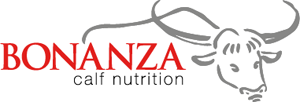Colostrum Management for lambs
Colostrum (beastings) is the first milk secreted from the ewe after birth. Colostrum contains high levels of antibodies, and has much greater total solids content than whole milk. This is due to the greater levels of fat and protein in colostrum compared to milk which are essential for metabolic fuels to the neonate (NRC, 2001).
Why is feeding colostrum so important?
The newborn is susceptible to infection due to a lack of transfer of immunity across the placenta from its mother. Colostrum provides the young with passive immunity until it can develop its own immunity. In addition to this it is the young’s first source of nutrition and colostrum provides all the essential vitamins and minerals to the neonate.
How much colostrum should a newborn lamb receive?
The recommended volume of colostrum to feed a newborn lamb/kid is 50g of colostrum per kg four times a day. Little and often is key so that the antibodies can be absorbed readily into the bloodstream. Lambs are considered to have a failure of passive transfer of immunity if the antibody (IgG) level is below 15mg/ml at 24 hours after birth. It is important to remember that not all colostrum is equal – colostrum quality is very variable. There are many contributing factors to the quality of colostrum produced by the ewe.
What if the ewe does not produce enough colostrum?
Seeking an alternative source of colostrum, either from another ewe that maybe only had a single or perhaps try and source goat or cow colostrum. It is always a good idea to keep a frozen supply of any extra good quality colostrum. Failing this a colostrum replacer/supplement should be given to the lamb – Read about our Take off colostrum supplement here.
How do I know if it is good quality colostrum?
Colostrum quality can be extremely variable between ewes and flocks. Therefore it is recommended that you test colostrum to know what you are feeding. A refractometer is a useful on-farm tool to use to accurately assess the quality of colostrum. It must read greater than 22% Brix score to be deemed good quality.
Why is hygiene so important?
During the collection of colostrum it is important that it does not get contaminated with dung or any other unhygienic matter. Whether lambs are suckling the ewe or hand fed colostrum it is essential that proper hygiene is applied. May it be that the ewe’s teats are dirty – this is an ideal opportunity for lambs to ingest bacteria. Similarly if the bottle or stomach tube has not been sanitised – you are increasing the risk of bacterial contamination. It is important that sick lambs are not fed using the same equipment as healthy lambs. It is a race between bacteria and colostrum – whichever gets there first wins.
How should I store extra colostrum?
Bacteria multiplies quickly in stored colostrum, especially in warm conditions (> 4°C) and bacterial growth is most rapid in the first 6 hours of storage. Therefore it is important that colostrum is placed in the refrigerator as quickly as possible. Colostrum can be stored in the freezer for up to 1 year without any deterioration in quality.
Contact us
Bonanza Calf Nutrition
Producers of the renowned Shine range of milk replacers for calves and lambs.
© 2017 Bonanza Calf Nutrition Ltd.
FIND US
